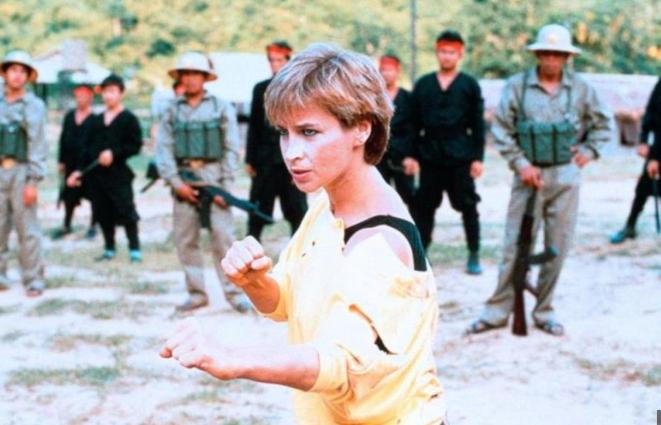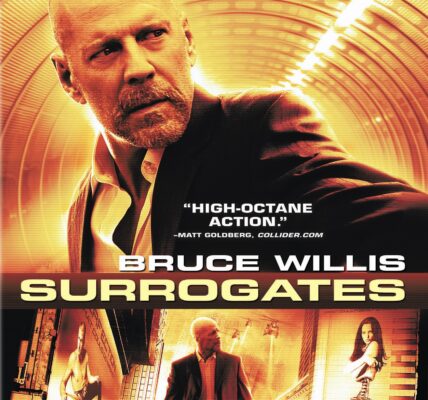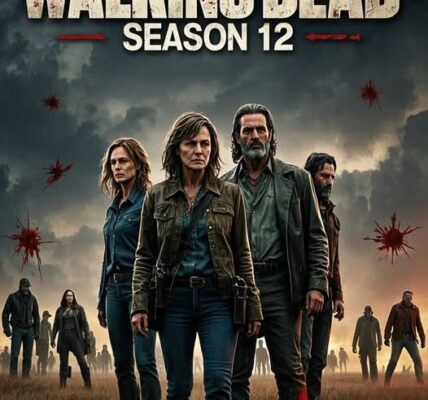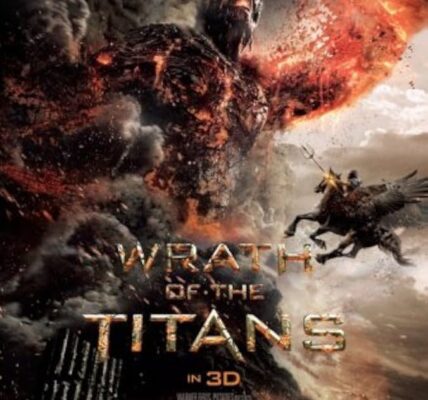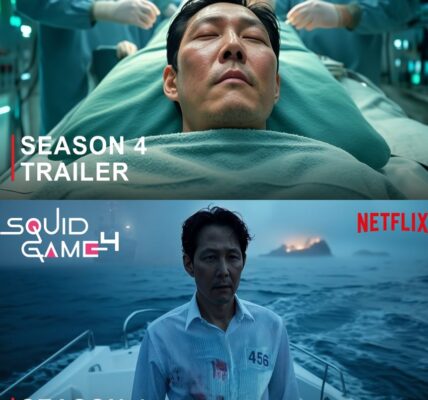1. Plot Summary
Although carrying the No Retreat, No Surrender name, this sequel is largely a standalone story.
Scott Wylde (Loren Avedon), an American kickboxer residing in Thailand, visits his friend Mac Jarvis. He’s paired with his Vietnamese fiancée Sulin Nguyen. When Sulin and her family are attacked—her family is murdered, and Sulin is kidnapped—Scott is framed for the crime. Fleeing custody, he teams up with Mac and a skilled pilot, Terry (Cynthia Rothrock), to rescue Sulin. Their journey takes them through Bangkok, into war-torn Cambodia, encountering Soviet and Vietnamese forces, gunfights, martial arts clashes, betrayals, and explosive confrontations.
Along the way they must navigate treacherous terrain, military camps, alligator pits, and the human cost of rescue missions.
2. Notable Elements
What stands out / strengths
- Action choreography & fight scenes: The martial arts sequences are energetic, acrobatic, and occasionally surprising in tight quarters (e.g. fights in apartments, cramped spaces)
- Exotic setting & scale: The film’s movement across Southeast Asia — Thailand, Cambodia, jungles, military camps — gives it a scope beyond typical dojos or urban backdrops.
- Strong villain presence: Matthias Hues as Yuri delivers a flamboyant, over-the-top antagonist whose sheer physicality and melodrama add flavor to the film.
- Cynthia Rothrock’s inclusion: Rothrock brings presence—even though her fighting screen time is limited, her persona and martial arts reputation elevate many scenes.
- Blending genres: The film doesn’t restrict itself to martial arts—gunfights, military ambushes, explosions, and large setpiece battles all appear, making it more than a pure karate film.
Weaknesses / shortcomings
- Thin plot / contrivance: Many plot points feel forced—Scott is framed, escapes, ends up in Cambodia—less character-driven, more plot device driven. Critics note the story is “nonsensical” at times.
- Character depth minimal: Aside from basic motivations, characters (especially Sulin, Mac, others) have limited development. Emotional stakes depend more on action than strong interpersonal arcs.
- Excessive exposition / genre tropes: Later scenes lean into explaining motives, conspiracies, alliances, which can undercut earlier suspense or momentum.
- Tone oscillations & “so bad it’s good” elements: Some dialogue or scenes are unintentionally cheesy; overuse of clichés and campy moments dilute tension.
3. Themes and Messages
- Rescue & Redemption: The drive to rescue a loved one and atone (for being framed / surviving guilt) is central.
- Loyalty, friendship & sacrifice: Scott, Mac, and Terry must trust each other, make sacrifices, and risk everything.
- Good vs. evil / power misuse: The film contrasts innocent individuals vs. militarized regimes and mercenary power (Soviet, Vietnamese forces).
- Chaos of war & collateral damage: The backdrop of conflict in Cambodia / Vietnam underscores how civilians are engulfed by geopolitical conflicts.
- Heroism in adversity: The narrative affirms that fighting for justice—even in punishing terrain—is possible, though costly.
Regarding holiday / festive sentiment: This is not a holiday film. Its themes are rugged, violent, and rooted in war/action. If one tried to draw a link, the ideas of sacrifice, loyalty, protecting loved ones echo values often celebrated in family / holiday narratives—but here expressed in extreme form rather than warmth.
4. Personal Impressions
What I liked:
- It’s entertaining in its ambition: mixing martial arts with war action, wild stunts, exotic locales.
- Many fight scenes feel visceral and fun; the movie leans into its action roots unapologetically.
- The villain is memorable; Hues’s overacting adds a kind of guilty pleasure.
- Rothrock’s presence is a highlight—even with limited screen time, she leaves mark in scenes she appears.
What I found lacking:
- I sometimes lost track of why characters made certain choices (e.g. Scott’s escape sequences). The logic is secondary to spectacle.
- In places, the pacing drags, especially during exposition dumps or setup sequences.
- Emotional stakes are not always compelling; when one character dies, it’s less gutting than the film hopes, because we haven’t had deep buildup.
- Some scenes feel dated in their racial / war depictions, borderline exploitation, or tropes of “foreign locales as dangerous.”
5. Audience Recommendations
Will enjoy if you:
- Like 1980s / vintage action / martial arts films with big stunts, gunfights, explosions, and less concern for realism.
- Are fans of Cynthia Rothrock or Matthias Hues and want to see them in genre-heavy roles.
- Appreciate movies where action is the star, plot is secondary, and spectacle rules.
- Enjoy “so-bad-it’s-good” or cult B-movie charm—films where flaws are part of the fun.
Might not enjoy if you:
- Prefer deep character drama or plots with tight logic.
- Want modern polish, CGI finesse, or emotionally resonant storytelling.
- Are uncomfortable with cultural stereotypes or heavy war tropes used as backdrop.
6. Conclusions & Rating
No Retreat, No Surrender 2 is a wild, energetic action ride. It doesn’t excel in narrative coherence or emotional subtlety, but makes up for it in fight scenes, spectacle, and daring genre mixing. For fans of 80s martial arts + war flicks, it’s a nostalgic adrenaline dose.
Final Recommendation: If you enjoy action over depth, spectacular fights over logical consistency, and can laugh (or cheer) at over-the-top villains and scenes, this is worth a watch. For deeper drama lovers, temper expectations.
Star Rating: ★★½ (2.5 / 5)
